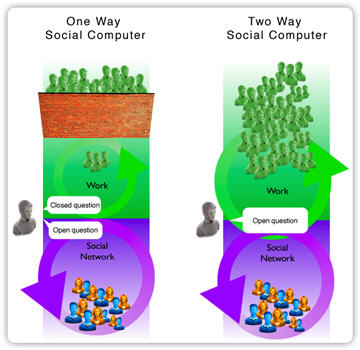Social networks in organizations: balancing risk, reward, and transparency
A rather popular topic these days is the risks to organizations of using social networks. An article in today’s Australian Financial Review examines the issue in detail, with an interview of me (excerpted below) hopefully balancing out the other opinions expressed in the article. Unfortunately the way I was quoted seemed to overemphasize my cautions relative to the benefits I discussed.
I am finding it very tiresome to continuously hear security consultants and vendors with big PR budgets go on endlessly about risks, without ever mentioning business benefits. This drone gets into executives’ heads, and as a result discussion of social networks – and many other potentially valuable business tools – focuses on risk and not benefit.
My Enterprise 2.0 Governance Framework explicitly addresses risks, benefits, and actions. It is critical to acknowledge, understand, and minimize risk, but executives are equally culpable if they ignore business value as if they ignore risk.
In the interview with the journalist I basically said that transparency increases business value, however providing transparency must be done intelligently and strategically. The danger is that executives become frightened of the risks, so unintelligently don’t provide transparency, and thus negatively impact the company’s value. Effective business leaders understand that in a complex world business value requires a highly nuanced approach, rather than the black and white view of organizations that is so frequently peddled. Excerpts from the article are below:
When one of Australia’s leading evangelists for Enterprise 2.0 acknowledges “there are some real dangers in an increasingly transparent world”, it’s worth listening.
Ross Dawson, chairman of the Future Exploration Network, is a great fan of online collaboration and communication, but admits there are limits. While research has revealed “a positive impact on stock prices where there is more transparency”, he warns that companies which transparently reported their customers’ private information, for example, would quickly see the opposite effect on share prices.


